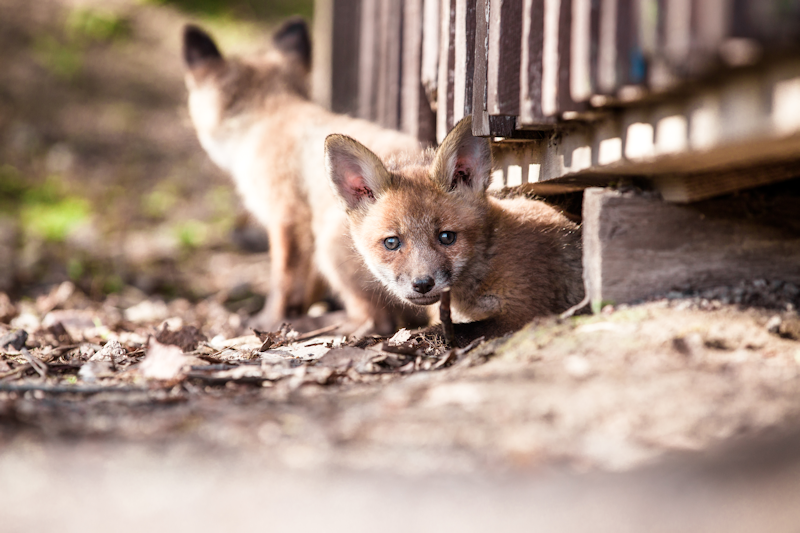Introduction
As urban and suburban areas expand, the issue of human-wildlife conflict becomes increasingly prevalent. In Maryland, one significant aspect of this conflict involves furbearers such as raccoons, foxes, and coyotes. These animals, driven by habitat destruction and changes in the environment, often find themselves in close proximity to human settlements. This essay explores the benefits of trapping furbearers, highlighting the necessity of this practice in managing wildlife populations, preventing the spread of diseases, and minimizing property damage.
Furbearer Conflicts in Urban and Suburban Settings
Adaptation to Habitat Destruction
Certain furbearers are remarkably adaptable animals. As their natural habitats are destroyed or altered due to urbanization and industrial development, these creatures are forced to adapt to new environments. Unfortunately, this adaptation often brings them into conflict with humans. Urban and suburban areas provide abundant food sources, such as garbage and pet food, attracting these animals and increasing their interactions with people and pets.
Close Proximity to Humans and Pets
The proximity of furbearers to human dwellings raises several concerns. These animals are often seen scavenging in garbage bins, gardens, and even homes. Pets, particularly small dogs and cats are at risk of encounters with furbearers, which can result in injuries or transmission of diseases. For example, raccoons and foxes are known carriers of rabies, a potentially deadly disease for both animals and humans.
Dangers of Spreading Disease
Furbearers can be vectors for various diseases that pose risks to human health. Rabies, distemper, and leptospirosis are just a few of the diseases that can be transmitted through contact with these animals or their excrement. The presence of furbearers in close proximity to homes increases the likelihood of disease transmission, making it essential to manage their populations effectively.
Negative Consequences of Furbearer Overpopulation
Property Damage
Overpopulation of furbearers can lead to significant property damage. These animals are known to dig through lawns, destroy gardens, and cause structural damage to homes by nesting in attics or under decks. Such activities not only result in financial losses but also create safety hazards for homeowners.
Impact on Local Wildlife
An overabundance of furbearers can also have detrimental effects on local ecosystems. They may prey on smaller wildlife, leading to imbalances in the ecosystem. For example, an increased raccoon population can significantly reduce bird populations by preying on eggs and nestlings.
Benefits of Trapping
Population Control
Trapping is an effective method for controlling furbearer populations. By selectively removing a portion of the population, wildlife managers can prevent overpopulation and reduce the negative impacts associated with it. This practice helps maintain a balanced ecosystem and reduces the likelihood of human-wildlife conflicts.
Disease Management
By reducing the number of furbearers in urban and suburban areas, trapping also helps manage the spread of diseases. Lower population densities decrease the chances of disease outbreaks and transmission to humans and pets. This is particularly important in areas with high incidences of rabies and other zoonotic diseases.
Minimizing Property Damage
trapping can significantly reduce property damage caused by furbearers. Fewer animals mean less digging, nesting, and scavenging in residential areas. Homeowners can enjoy their properties without the constant threat of damage from wildlife.
Responsible Trapping Practices
Ethical Considerations
It is crucial to conduct trapping in an ethical and humane manner. Trappers should be trained and licensed to ensure they adhere to best practices and regulations. Non-target species should be released unharmed, and the welfare of trapped animals should be a priority.
Community Education
Educating the community about the benefits of trapping and how to coexist with wildlife is essential. Residents should be informed about proper waste management, securing pet food, and other measures to minimize attractants for furbearers. This education can reduce the likelihood of conflicts and promote a harmonious relationship between humans and wildlife.
Conclusion
Trapping furbearers in Maryland is a necessary practice for managing wildlife populations, preventing disease transmission, and minimizing property damage. As urban and suburban areas continue to expand, the need for effective wildlife management strategies becomes increasingly important. By implementing responsible trapping practices and educating the community, we can mitigate human-wildlife conflicts and promote a safe and balanced ecosystem.
—
References for more strategies on managing human and animal conflict.
- Managing Urban Wildlife Conflicts https://conbio.onlinelibrary.wiley.com/doi/full/10.1111/csp2.13074
- The Role of Trapping in Wildlife Management https://www.neafwa.org/benefits-trapping.html
- Human-Wildlife Interactions: Challenges and Solutions https://www.sciencedirect.com/science/article/abs/pii/S0006320721001476
FAQs
Q: What are furbearers?
A: Furbearers are mammals that are primarily hunted or trapped for their fur, including species such as raccoons, foxes, and coyotes.
Q: Why is trapping necessary?
A: trapping helps control the population of furbearers, preventing overpopulation, reducing the spread of diseases, and minimizing property damage.
Q: How does habitat destruction affect furbearers?
A: Habitat destruction forces furbearers to adapt to new environments, often bringing them into closer proximity with humans and increasing the likelihood of conflicts.
Q: What diseases can furbearers transmit?
A: Furbearers can transmit diseases such as rabies, distemper, and leptospirosis, posing risks to human and pet health.
Q: How can property damage from furbearers be minimized?
A: Property damage can be minimized through trapping, proper waste management, and securing pet food to reduce attractants.
Q: Is trapping ethical?
A: Trapping can be conducted ethically by following best practices, ensuring the welfare of trapped animals, and releasing non-target species unharmed.
Q: How can the community help in managing furbearer populations?
A: The community can help by being informed about responsible waste management, securing attractants, and supporting ethical trapping practices.
By addressing these questions and providing valuable insights into the benefits of trapping, residents of Maryland can better understand the importance of managing furbearer populations in urban and suburban settings

